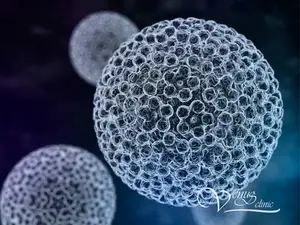
What is cellulite
Cellulite is an aesthetic problem that manifests itself as lumpy skin on the legs, buttocks and abdomen. Does not pose a threat to health, occurs mainly in women.
Symptoms
Cellulite looks like dimples on the skin - uneven, bumpy skin. It is sometimes compared to the texture of cottage cheese or orange peel.
In the initial stages, cellulite does not manifest itself in any way, you will see it if you squeeze the skin in the area where cellulite is most common, for example, on the thighs. In more pronounced stages of cellulite, the skin looks uneven with areas of retraction and elevation in a relaxed state of the skin.

Cellulite stages
- Stage 0- the surface of the skin is not changed.
- Stage 1- the surface of the skin appears to be smooth when a person is standing or lying, however, when the skin is mechanically squeezed, irregularities on the surface are noted.
- Stage 2- depressions are noted on the surface of the skin without any squeezing or other manipulation.
- Stage 3- in some areas there are both indentations and unevenness of the skin surface.
What are cellulite causes?
Little is known about the causes of cellulite today.
The basic premise is the anatomy of the structure of the subcutaneous fatty tissue in women. Connective tissue bridges are anatomical norm and form cords, which are attached to the skin at one end and to the aponeurosis and muscles at the other; fat cells are located between the cords, as if in cells. This is where the name cellulite comes from (from the Latin cellula- cell, cell). As the fat cells grow, they cause uneven bulging of the skin, while the bridges of the connective tissue cause the skin to be depressed. This creates an uneven surface.
Hormonal factors play an important role in the development of cellulite, and genetics determines the structure of the skin, the texture of the skin and the anatomy of the body. Other factors, such as weight and muscle tone, affect the appearance of cellulite, although very thin people can have it.
Risk Factors
Cellulite is much more common in women 95-98% than in men. Most women develop cellulite after puberty. This is due to the fact that female fat is usually distributed in the thighs, thighs and buttocks - the most common areas of cellulite localization. Cellulite is also more common with aging, when the skin loses its elasticity.
Until recently, cellulite was considered a sign of femininity. Only in the second half of the 20th century, with the advent of new canons of beauty, war was declared against cellulite.
Weight gain can make cellulite more visible, but some thin people also have cellulite. There is a genetic predisposition, so genetics can play a big role in the development of cellulite. A sedentary lifestyle can also increase your chances of cellulite, just like pregnancy.
How to get rid of cellulite
Since cellulite is not a disease, the term treatment is conditional and is more aimed at eliminating a cosmetic defect, so it would be more correct to use the term cellulite correction. Cellulite correction products can be divided into 4 main groups:
- Dietary supplements for cellulite correction act mainly by removing fluid from the body, normalizing hormonal levels and reducing body weight.
- Creams for cellulite, cosmetic wraps act by improving microcirculation and improving metabolic processes in the skin.
- Injection procedures - mesotherapy, lipolytics. The action is aimed at improving tissue metabolism and the volume of adipose tissue (lipolytics).
- Physiotherapy is aimed at several links of pathogenesis: improving the outflow of lymph from the lobules of adipose tissue, increasing the elasticity of septa, reducing the volume of adipose tissue.
- Surgical treatment is a type of laser lipolysis. During the procedure, the laser destroys the septa (septa) that form retractions of the skin, which leads to a quick and long-lasting effect.
We use non-surgical cellulite treatment. Lipo cavitation combined with deep radiofrequency heating to correct cellulite.
Read more - How to get rid of cellulite.







